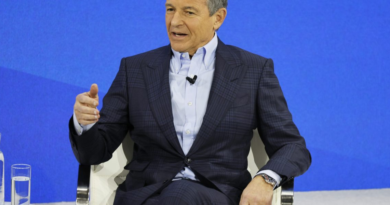Renting is getting too expensive for Gen Z, making living alone a luxury saved for the middle-aged
Most everyone has a roommate horror story, complete with all the drama of a soap opera reserved for something as mundane as washing dishes with the wrong soap or as weird as where they cut their nails. Such an experience is largely a rite of passage of young adulthood, but increasingly so for Gen Z, who is set to make a Goosebumps series of roomie stories as living alone becomes more difficult in today’s economy.
Solo living has become a luxury saved for middle-aged; 50 is the average age of the typical U.S. renter living alone, per the latest Census data from 2022, first reported by Axios. Twenty-somethings have long had roommates to cut costs while on entry-level salaries, especially when making ends meet in large cities. But in a time of skyrocketing rent and inflation, the trend is solidifying as one of the only ways young adults can afford city life or renting in general.
In the late 1960s, just 6% of young adults (18 to 31) lived with roommates who weren’t their partner, per Pew Research. But by 2018, one in three were living with someone who wasn’t a partner or college roommate. It’s partly the result of both newfound agency and economic hardship; as young adults increasingly delayed having children for financial reasons and to pursue new opportunities, a new path to co-habitation formed that the Great Recession later cemented with a roommate boom.
As navigating the economy as a single-income individual got even more expensive since, having a roommate became more than just having a Bert to your Ernie. While a married couple’s median household income in 2021 was $106,921, that drops down to $70,525 for men and $51,168 for single women, per Census data.
Meanwhile, the cost to put a roof over one’s head has soared. The average home price has spiked over the last decade from $334,400 at the end of 2013 to $513,400 now, per St. Louis Fed data, making the market almost impossible for a young adult to navigate without help from their parents.
The rental market is not nearly as extreme, but still a beast to contend with—this past August saw the largest monthly increase in rent (at 0.7%) since 1991. As the cost of living climbs faster than salaries for Gen Z entry-level workers, spending 30% of income on rent has become the “new normal” in a lot of big cities, per Moody’s analysis. Living paycheck to paycheck has left many people have turning to extra jobs just to make ends meet.
Inflation is only making things worse for renting Gen Zers. Last June, the cost of living hit 40-year highs. While it’s since cooled down some, wages still aren’t competing with the current economy. Young adults out of college make about $10,000 less than their parents did adjusting for inflation, per a report by Self Financial.
That’s enough to nix any plans of living alone for a generation that already feels they’re “starting further behind financially” than their parents when they were the same age. Chief among their major obstacles: getting a job, a promotion, and a house. While many aspire to be able to support themselves, a good chunk of these young adults feel that the economy is “hurting their ability to be a financially independent adult.”
Some Gen Zers (and millennials) are going so far as to room with mom and dad. Moving back home gained traction after the Great Recession, climbing in popularity during the pandemic. The percentage of young adults living at home climbed over 87% in the last 20 years, per Census data. It’s become so common that the stigma formerly associated with living with the ‘rents started to erode.
But if living at home starts to sour and the big metros begin to beckon, you might have to swap them for a roommate horror story in the city.




